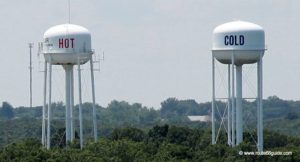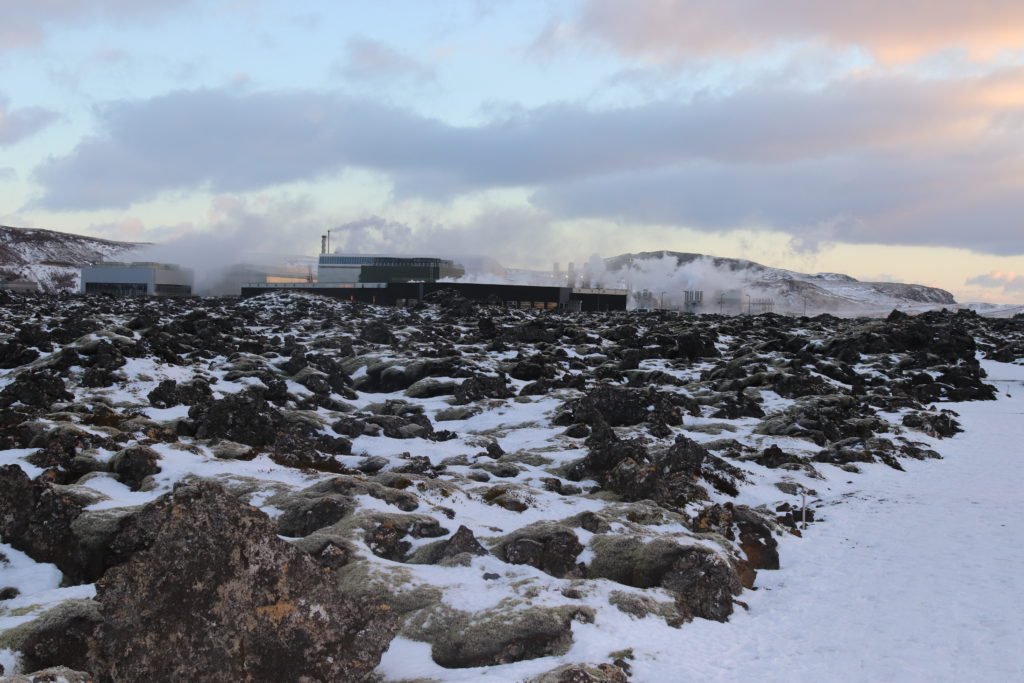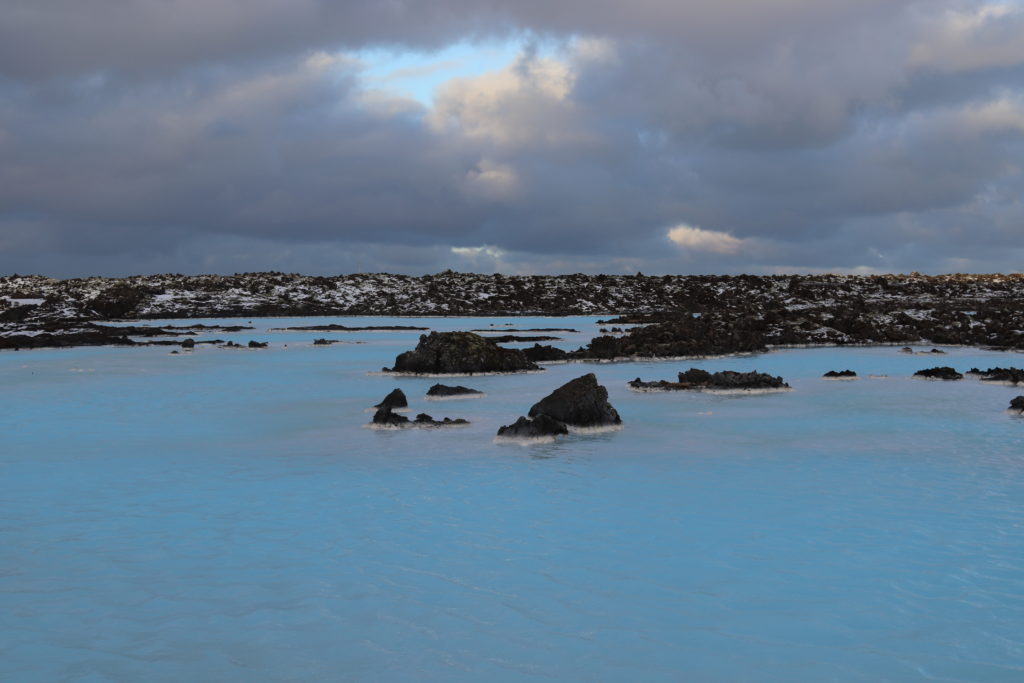Indulge me for a moment in some engineering humor. There is such a thing. I often work with water utility companies helping them set up systems to manage repairs, which includes managing customer complaints or requests. Inevitably, someone around the table will bring up the story of the time the guy called the water department to complain that his hot water wasn’t hot enough. Ha, ha, ha … we’d all laugh knowing that North American water departments don’t deal with hot water. They distribute cold water that gets heated up when it’s piped through the hot water heater at your home. There’s always the grizzled old maintenance supervisor who swears someday he’s going to paint HOT and COLD labels on the town’s two water towers. Ha, ha, ha. Yeah, that’s the joke. I’ll keep my day job.

From the abundance of hot/cold water tower photos I can find on google … this admittedly might be the ONLY civil engineering joke.
Anyways. Scene II. Iceland. Home of serious, ongoing, active underground volcanic activity – or geothermal activity. D’ya know what happens when you mix groundwater with the molten magma that comes from volcanic activity? Really. Hot. Water. Really hot. Really far beneath the earth’s surface. Unless it’s not, of course, where it bubbles to the surface creating natural hot springs. Some nice and cozy; some flesh-cookingly hot.
Geothermal power stations in Iceland drill into the earth to access this hot water using it for both electricity and … well, hot water. Steam is captured to turn turbines that create electricity that’s distributed much like our power grid system here in North America. But hot water is also piped across country to all homes and businesses to both heat the homes (radiators) and provide really nice hot showers. So my hot and cold water tank joke would fall even flatter in Iceland than it did here.

OK, that’s your mandatory engineering lesson for the day. For the keeners looking for extra credit, stay tuned. I’ll be posting a longer story of geothermal energy and hot water distribution elsewhere on this site.
Back to my Icelandic adventure. After the steam turns the turbines and creates the energy that’s sent off to Reykjavik, there’s a lot of hot water left. When that’s “disposed of” in surrounding lava fields it creates lagoons of hot water full of silica and minerals. This was happening in the late 1970s when the Svartsengi Geothermal Power Station about 45 minutes outside of Reykjavik was constructed.

Hardy Icelanders started dipping their toes, and eventually everything else, into these ponds and began to swear by the health effects. Some enterprising folks then built an artificial lagoon (like a CE-MENT pond) to capture the runoff from the Svartsengi power station and christened it the Blue Lagoon.
Holy Smokes that was a long lead in to the next stop on my Iceland trip … onward to the Blue Lagoon and the adjacent Silica Hotel.
 Lori says
Lori says
December 9, 2017 at 8:37 pmGee, you engineers sure have a keen sense of humour!! 😜
 Lee says
Lee says
December 11, 2017 at 10:17 amNot only entertaining, but educational, too! (Full confession: I would have been one of those folks who thought hot water came from the municipality!! haha)